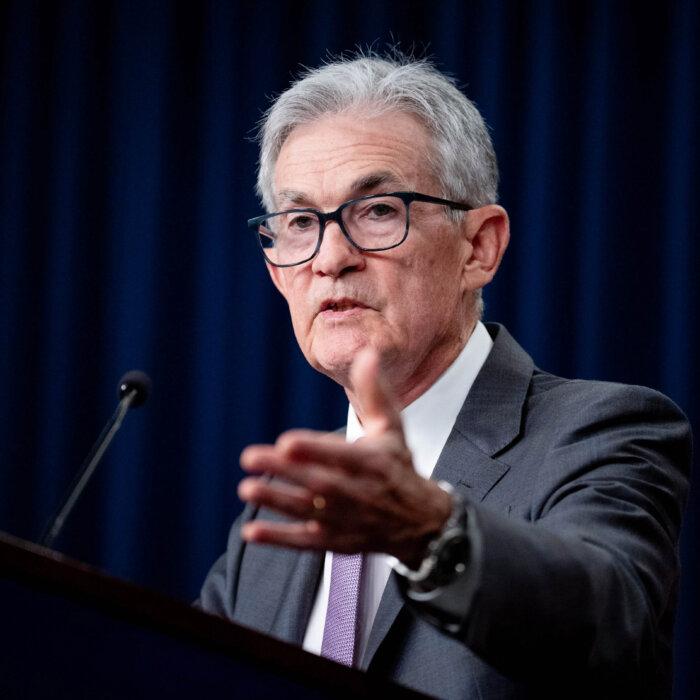Federal Reserve Chairman Jerome Powell, in his prepared speech at the recent Jackson Hole Economic Symposium, said: “It seems unlikely that the labor market will be a source of elevated inflationary pressures anytime soon. We do not seek or welcome further cooling in labor market conditions.”
Have the central bank’s tightening efforts since March 2022 finally doused the red-hot, post-COVID-19 pandemic U.S. labor market?
So far this year, the number of new jobs has totaled about 1.9 million, compared with 1.4 million in 2023. The unemployment rate is at 4.3 percent, compared with 3.5 percent.
Over the past year, market watchers have observed various other economic indicators that suggest the jobs arena is loosening and becoming better balanced, in line with pre-crisis conditions.
Hiring, Quitting, Expectations
The number of job openings has declined by about 1.1 million since September 2023, with vacancies totaling a little more than 8 million, according to the Job Openings and Labor Turnover Survey by the Bureau of Labor Statistics.Research has highlighted that employers are putting their staffing plans on ice.

Businesses’ reasons for not adding staff or trimming the fat vary economically and politically.
Troy Miller, president and CEO of Christian television channel NRBTV, said that although some positions have been open for several months, the company is not looking to add new positions.
As a result, hiring plans have been frozen until the fourth quarter, and economic conditions will be assessed to determine how confident NRBTV is moving forward.
Miller also serves as president and CEO of the National Religious Broadcasters trade association and reports a similar experience among association members.
“We’re waiting to see after the election,” Miller told The Epoch Times. “This is what I hear from people in our association, quite honestly: The economy is not strong. They’re very concerned about where that’s going.”
Workers are also nervous.
The number of people quitting their jobs, according to the Department of Labor, has tumbled by about 300,000 to its lowest level since November 2020.
The regional central bank’s SCE data revealed that fewer respondents than a year ago would expect to find a job in the next three months if they were terminated today.

Researchers also found that 4.4 percent of those currently employed expect to be unemployed in the next four months, up from 3.4 percent in November 2023.
Job loss concerns are ubiquitous across the U.S. labor market, with 55 percent of full-time workers worried about losing their positions, a recent AuthorityHacker survey found.
2 or More Jobs
Over the past year, the number of people working two or more jobs has steadily risen and hovered near an all-time high of approximately 8.5 million.They account for 5.3 percent of those currently employed, little changed from a year ago.
Workers have been continually searching for other employment opportunities amid economic concerns. Even when employed full time, many complement their schedule with part-time jobs, contract positions, or gig work.
Keith, a tech professional who has been with his current employer for more than three years, routinely looks for part-time work, often during the holidays or when his children are asleep.
“I try to keep my options open. I have a wife and four kids that I have to think about,” Keith, who asked that his last name not be used, told The Epoch Times.
Citing worries about the growing cost of living, economic stability, and job insecurity, he said it can be challenging in today’s economic climate if employers do not hand out bonuses or give their staff members a raise.
“If I move to the next company, they know they need to pay me 10 percent more now because that’s the standard of living,” Keith said. “In the current job that I have, I get 1 percent. That’s not good.”
Keith is perusing platforms such as Indeed to find part-time or contract work. He said that balancing full-time employment with a part-time job can be challenging, but it needs to be done to meet his family’s financial needs.

Still, month-over-month prices continue to surge in many pockets of the economy. In July, ground beef prices rose by 1.3 percent, the price of a dozen eggs climbed by 5.5 percent, and the price of milk increased by 1.9 percent.
When the COVID-19 pandemic inflation bomb went off, it reset prices across the marketplace, meaning households are still trying to catch up, even as wages stagnate.
Price pressures have leveled off since September 2023. However, there is still a divergence between what workers earn and the cost of living. Real hourly compensation is still down by 0.3 percent, while the CPI has risen by 2 percent.
What would it take for Keith to quit working more than one job? Lower prices across the board.
Labor Day 2025
The Federal Reserve maintains a dual mandate of price stability and maximum employment.After the hope that inflation would be transitory was unrealized, the Fed focused on restoring price stability and lowering inflation to its 2 percent target.
Powell said in his speech that now that “inflation has declined significantly” and “the labor market is no longer overheated,” the central bank will shift its attention to the other part of its two-sided mandate: maximum employment.
Despite raising interest rates to their highest levels in 23 years, the institution did not collapse the labor market. After two-plus years of a restrictive policy stance, monetary policymakers are gearing up for rate cuts as unemployment has reached its highest level since October 2021.

Powell is not panicking, asserting in his Aug. 23 Jackson Hole address that the rise in joblessness has been fueled by an increase in the supply of workers rather than layoffs.
Indeed, according to Challenger data, layoffs have slowed for four straight months since peaking in March.
In the first seven months of 2024, companies announced more than 460,000 job cuts, down by more than 4 percent from the same time last year.
“The job market is indeed cooling, with hiring at the lowest point in over a decade. While we are seeing increased cuts in manufacturing sectors, both consumer and industrial, most industries are cutting below last year’s levels,” Challenger, Gray & Christmas, Inc. Senior Vice President Andrew Challenger said.
Economic forecasts predict slightly higher unemployment in the coming years.
He forecasts the unemployment rate to rise to 4.4 percent in 2025 and 4.5 percent in 2026.
That is slightly higher than the Fed’s predictions of 4.2 percent and 4.1 percent, respectively.
As for earnings, U.S. employers are penciling in 3.5 percent raises next year, according to Payscale’s latest salary budget survey.
Will the Fed’s rate cuts be enough to prevent further joblessness? For Powell and his colleagues on the Federal Open Market Committee, the labor market has cooled enough.














